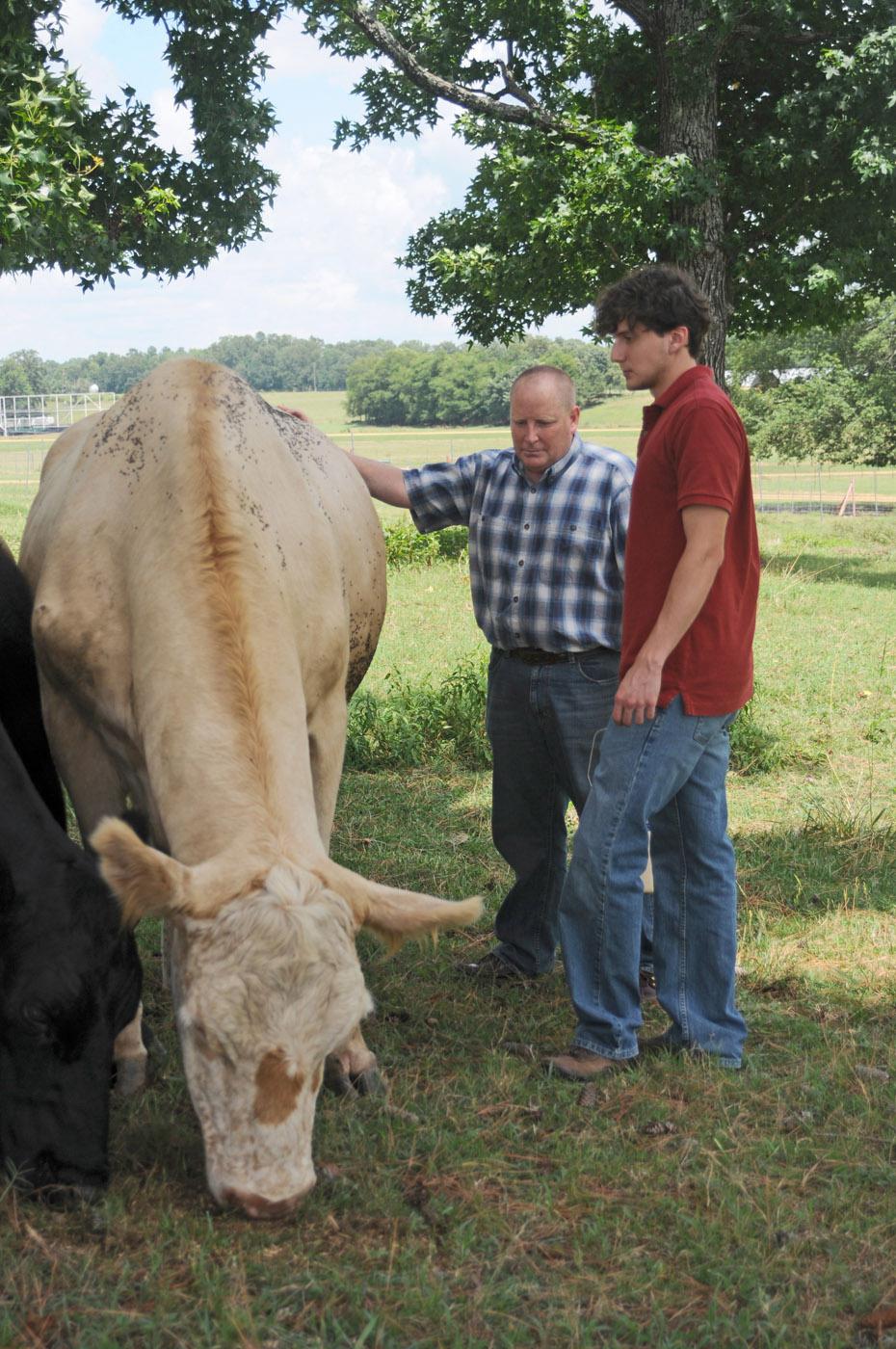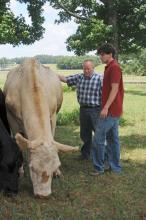Information Possibly Outdated
The information presented on this page was originally released on August 13, 2009. It may not be outdated, but please search our site for more current information. If you plan to quote or reference this information in a publication, please check with the Extension specialist or author before proceeding.
MSU cattle 'stomach' fiber byproduct trial
By Patti Drapala
MSU Ag Communications
MISSISSIPPI STATE – Corn-to-ethanol manufacturing has created huge amounts of a byproduct suitable as an ingredient in cattle feed, and Mississippi State University researchers want to know if a more refined version packs the same nutritional punch.
The byproduct is known in the ethanol industry as distillers dried grains with solubles, or DDGS. Ethanol manufacturers extract starch from corn to produce fuel. They discard the protein, fat and fiber of the corn. Some feed manufacturers have used this byproduct, in its unrefined state, in products for cattle.
Animal nutritionist Brian Rude of the MSU Department of Animal and Dairy Sciences, and his graduate student, Jonathan Greene of Trussville, Ala., conducted a digestibility study of refined distillers grains on steers at MSU’s South Farm. The refined version has a higher concentration of fiber.
The Mississippi Agricultural and Forestry Experiment Station funded their research, which holds promise for cattle producers and feed manufacturers.
“The byproduct does not differ much from the energy value of corn used as feedstuff,” Rude said. “People don’t know what to do with the increasing amounts of distillers grains, and many researchers are separating the components of the byproduct to look for new uses. We wanted to see if a refined version, which contains more fiber, could still be used as feedstuff for cattle.”
MAFES bioenergy scientist Radhakrishnan Srinivasan developed a technique he calls the “elusieve” process to use sifters and air to separate the fiber in distillers grains from the protein and fat. Some of these nutrients still cling to the fiber particles afterwards. Srinivasan supplied the researchers with unrefined and refined versions of distillers grains for the study.
“If we can use a byproduct that humans can’t eat to produce food that they can, we’re doing a successful job of recycling,” Rude said.
Cattle are ruminant animals and need fiber in their diet to effectively digest their food. Rude and Greene designed a feed trial to see if the higher fiber content in refined distillers grains would affect digestibility.
Twelve steers were divided into three groups of four and placed in holding pens. One group was fed a ration containing refined distillers grains, which the researchers designated as the L-fraction, or lighter density fraction.
A second group of steers was fed a ration containing unprocessed distillers grains, and a third was given a control ration equivalent to commercial feed. The researchers allowed the animals to adjust to the new feed before conducting a 10-day trial on the experimental rations.
“We allowed the steers to adjust to the new feeding routine before we ran the trial,” Greene said. “We monitored food intake by feeding them a special diet first and then putting them exclusively on the experimental rations before gathering samples.”
Greene sampled the rations prior to feeding and the portions the steers did not eat. He also sampled the steers’ urine and feces. He then analyzed the samples for nutrients.
“We wanted to see how well the steers digested and utilized the different feeds,” Greene said. “If the higher-fiber L-fraction ration adversely affected the cattle’s digestive systems, then that would indicate it was not a suitable feedstuff.”
Interestingly, the results indicated the steers fed the L-fraction ration were able to digest a greater percentage of protein than those on the other two diets. Fat digestibility was similar between the unprocessed distillers grains and the L-fraction, but generally better than the control diet.
Perhaps even more significant, the steers that ate the L-fraction ration consumed less feed than those on the unprocessed distillers grains ration and those eating the control diet. The L-fraction diet resulted in steers eating less but digesting more protein.
“The nutrient digestibilities for all three groups were comparable and there were no significant differences among the different rations,” Rude said.
Future studies of refined and unrefined distillers grains may lead to the identification of potential ingredients for cattle feeds that are cost effective and may even enhance weight gain.
“Feed costs make up from 50 percent to 75 percent of the cattle producer’s total cost,” said Rude. “If cattle can eat less of a feed that contains an ingredient, such as refined distillers grains, and digest a greater amount of protein, producers could potentially minimize feed costs.”






